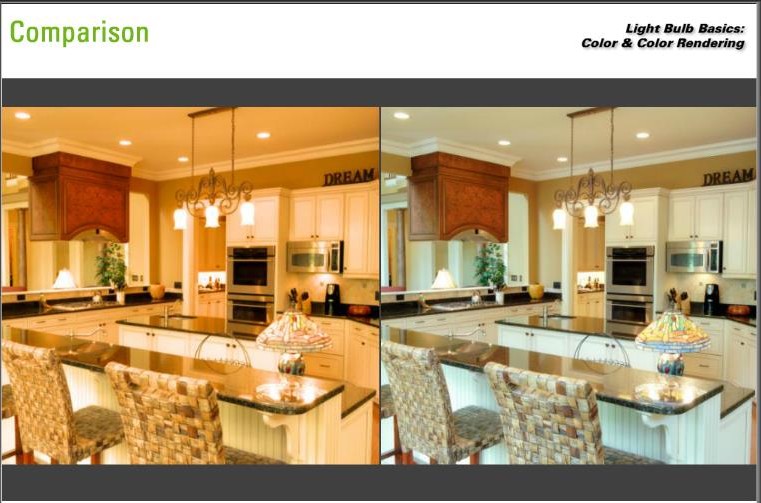Modern energy-saving LED (Light Emitting Diode) lights are mainly divided into three color temperatures: daylight, bright white and soft white. Looking back on good times in the past, light lights are only defined by wattage, but this is a wrong statement, because wattage is actually a measure of the amount of electrical energy consumed, not the actual brightness of the light. However, today’s light lights use lumens and Kelvins as the unit of measurement that best describes light intensity. A 100-watt incandescent light, for example, emits about 1200 lumens of light. However, a 12-watt power rated LED light emits the same amount of light as their incandescent counterparts.
That being said, the three primary types of color temperature for light lights are: Soft White (2700K – 3000K), Bright White/Cool White (3500K – 4100K), and Daylight (5000K – 6500K). These are nothing but representations of the quantitative value of Kelvins. We will only discuss the Daylight and Soft White LED light lights in this article. Then at the beginning, you have to know what color temperature is.
1.What is color temperature?
The color temperature of a light source is the temperature of an ideal black-body radiator that radiates light of a color comparable to that of the light source. Color temperature is a characteristic of visible light that has important applications in lighting, photography, videography, publishing, manufacturing, astrophysics, horticulture, and other fields. In practice, color temperature is meaningful only for light sources that do in fact correspond somewhat closely to the radiation of some black body, i.e., light in a range going from red to orange to yellow to white to blueish white; it does not make sense to speak of the color temperature of, e.g., a green or a purple light. Color temperature is conventionally expressed in kelvins, using the symbol K, a unit of measure for absolute temperature.
Soft White produces a yellow hue and a lower color temperature in the range of 2700 – 3000 K. Daylight is a very bright white-blue light with a very high color temperature in the range of 5000 – 6500 K. They reflect colors naturally just like Warm White LED lights creating a near-perfect natural effect. Remember, the higher the Kelvin value, the brighter the light. We present an unbiased comparison between the two LED light types based on their color temperatures. Color temperatures over 5000 K are called “cool colors” (bluish), while lower color temperatures (2700–3000 K) are called “warm colors” (yellowish).
2.What is Soft White LED light?
Soft White produces a yellow hue and a lower color temperature in the range of 2700 – 3000 K. It replicates a yellowish white light that the regular incandescent lights gave off. lights that are marked as soft white or warm white or Kelvins below 3000 K produce a warm white light providing a warm, cozy feel to your living room and bedroom. Unlike Daylight LED lights, soft white is more rich in yellow and red, thus producing a warm light. Soft whites are the yellowest of all LED lights and work well where you want soft lighting. Because of its lower color intensity, it makes light feel warm, producing a more relaxing light. This is why it’s ideal for overall illumination in areas such as living room, dining room, or bedroom.
3. What is Daylight LED light?
Daylight, as the name suggests, are very bright white LED lights that produce a nice calming effect because of its wider light spectrum. Daylight LED light produces a higher color temperature in the range of 5000 – 6500 K.
Although light lights still have a long way to go until they can perfectly replicate the beautiful glow of natural and consistently-changing sunlight, daylight LEDs are perhaps next best thing out there. Daylight LEDs are ideal for spaces where you need a bright light that looks natural but doesn’t have the bluish hue of cool white lights. These versatile lights can be used in almost any area of your home.
Make the most out of your LED lights by choosing the right color for the space you’ll be using the light in. Not only will they enhance the look of the space, LEDs can help reduce your electricity costs and maintenance bills.
4. Differences between Soft White LED and Daylight lights:
a.Hue:
Soft White, on the other hand, produces a very soft and warm light yellow tone, which creates a very smooth and relaxing feeling. Due to its lower color intensity, it makes the light feel warmer, resulting in a more relaxed light. Daylight LED provides an instantaneous warm glow to your interiors just like the sun’s natural light, while the full-spectrum LEDs emit light across the full spectrum of natural light. It creates more of a bluish-white color. Daylight LED is less harmful to eyes due to its bright light.
b.Color Intensity:
Intensity refers to the brightness of a color and can also be referred to as saturation. Intensity is how bright a color looks. Soft White produces a yellow hue and a lower color temperature in the range of 2700 – 3000 K, whereas daylight LED light produces a higher color temperature in the range of 5000 – 6500 K. Daylight creates a natural effect because of its greater color contrast, whereas Soft White, because of its lower color intensity, makes light feel warm, producing a more relaxing light.
c.Different Use of Soft White vs Daylight LED lights:
Soft white or warm white, on the other hand, creates a yellowish hue, close to incandescent lights, which makes it ideal for bedrooms and living rooms, and it’s perfect for overall illumination in a dining room. Higher lumen LED lights such as Daylight lights produce bright whites or mimic the natural light of the sun and its ambient color temperature makes it ideal for kitchens, bathrooms, and basements. The exceptionally bright yet natural light is suitable for reading or working on projects or for accent lighting.
5. Conclusion
Therefore, if you want to reproduce the old yellowish white light near the incandescent light, then a light marked as soft white with a color intensity of 2700 – 300 K is feasible. On the contrary, if you want to imitate the natural light of the sun, and you want the light to have more of a bluish-white color, then the LED light marked as daylight and the color temperature of 5000 – 6500 K is the best choice. The lower color temperature of soft white LED lights makes them ideal for bedrooms and living rooms, while the ambient color temperature of daylight LED lights makes them suitable for reading or accent lighting. Well, in the final analysis, finding the right LED light for your home according to your personal preferences.










